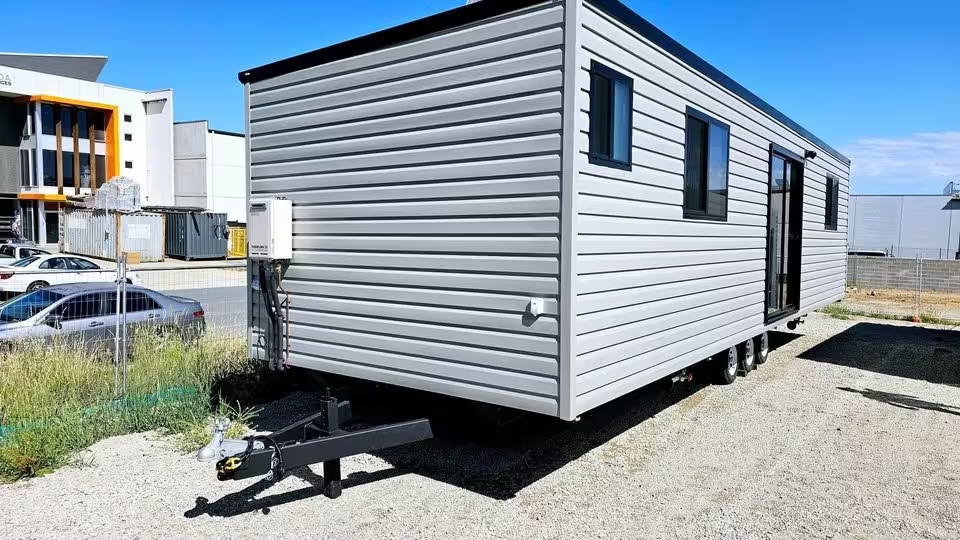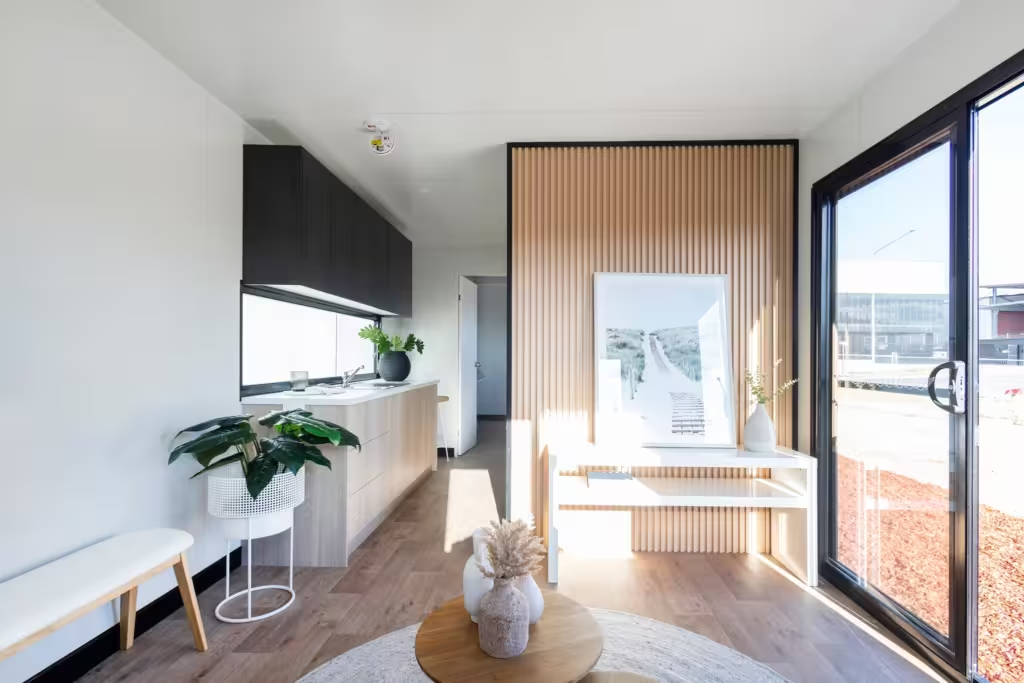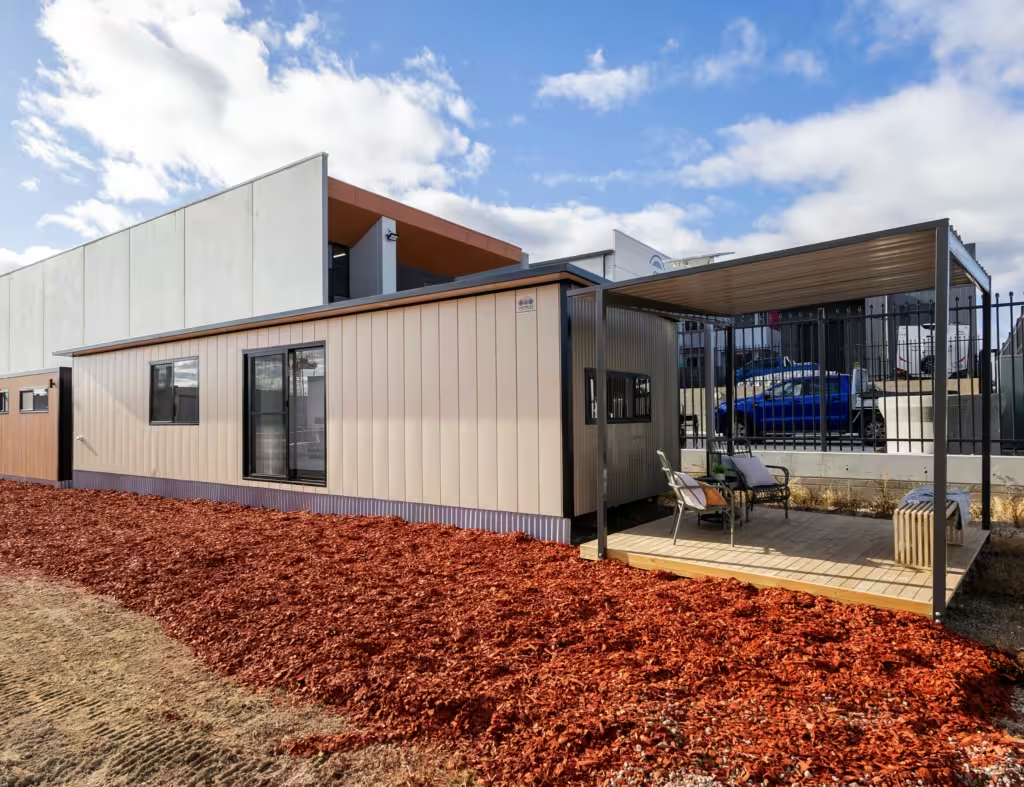Table of contents
- Introduction
- 1. What Are Transportable Homes?
- 2. Key Benefits of Transportable Homes
- 3. Types of Transportable Homes
- 4. Design and Customisation Options
- 5. Costs and Financing for Transportable Homes
- 6. Environmental Impact of Transportable Homes
- 7. Common Myths About Transportable Homes
- 8. Frequently Asked Questions (FAQs)
Introduction
Transportable homes are redefining the housing market, offering a flexible, affordable, and sustainable alternative to traditional builds. These homes provide an ideal solution for those seeking a cost-effective residence that can adapt to various locations and lifestyles. This comprehensive guide will walk you through everything you need to know about transportable homes, from design options and benefits to myths and environmental impact.
1. What Are Transportable Homes?
Transportable homes, often referred to as portable or relocatable homes, are built in a factory and transported to the intended location. Unlike traditional homes, which are constructed on-site, transportable homes are built off-site, allowing for a faster, more controlled building process. These homes are designed to be moved if necessary, making them an excellent choice for various lifestyles and settings.
Transportable homes come in a variety of styles, from compact single-units to spacious multi-modular designs. They are constructed using high-quality materials and are built to meet or exceed building standards, making them durable and safe for long-term use.

2. Key Benefits of Transportable Homes
Cost-Effectiveness
Transportable homes are generally more affordable than traditional builds due to streamlined construction and reduced on-site labour costs. Built-in a factory setting, they save on materials and labour expenses, which translates to significant cost savings for buyers.
Speed of Construction
Because transportable homes are built in a controlled and covered environment, they can be completed in a matter of weeks. Traditional builds, on the other hand, are often delayed by weather, material shortages, or labour issues. Once a transportable home is ready, it is transported and delivered to the desired site, making the entire process much quicker than conventional construction.
Flexibility in Location
Transportable homes can be placed in a wide range of locations, including rural, suburban, and urban settings. Their portability allows owners to relocate the home if needed, offering unmatched flexibility.
Sustainability
Building a transportable home in a factory results in less material waste and allows for more efficient use of resources. Many transportable homes also incorporate energy-efficient features, reducing their environmental impact. Our homes are built to all relevant Australian building standards, meeting any energy-efficient ratings required by your state.
3. Types of Transportable Homes
Single-Unit Homes
These homes are typically compact and are a great option for individuals or small families. Single-unit homes offer all essential amenities in a smaller space, providing an affordable and efficient housing solution.
Multi-Unit or Double-Width Homes
For those needing more space, multi-unit transportable homes are available. These homes can be customised with additional rooms or expanded layouts, making them suitable for larger families or those who prefer a spacious interior. Usually two homes are built together to create extra room within the home.
Luxury Transportable Homes
Transportable homes aren’t just basic; luxury options offer high-end finishes, spacious layouts, and premium amenities. These homes cater to those seeking a stylish and comfortable living experience with the flexibility to move. With Moduluxe, we offer a premium and architectural range that includes things like eaves along the perimeter of the building, Colorbond cladding and colour matching finishes.
Temporary vs. Permanent Homes
Transportable homes can serve as temporary accommodations, such as holiday homes, or as permanent residences. Depending on the design and materials used, these homes can meet various needs, from short-term solutions to full-time living spaces.
4. Design and Customisation Options
Layout and Floor Plans
Transportable homes offer a variety of layouts, from open-concept designs to more traditional floor plans. Homeowners can choose from a range of layouts that best suit their lifestyle, whether they need a larger kitchen, extra bedrooms, or a spacious living area.
Finishes and Features
Customisation is key in transportable homes. Homeowners can select finishes such as cabinetry, flooring, countertops, and fixtures. Additional features like skylights, outdoor decks, and energy-efficient appliances can also be added.
Exterior Design Choices
Transportable homes come with options for exterior finishes, including siding materials, roofing types, and outdoor features. These choices allow homeowners to create a home that fits well within the surrounding environment, whether it’s rural, suburban, or urban.

5. Costs and Financing for Transportable Homes
Base Costs and Add-Ons
The cost of a transportable home depends on factors like size, materials, customisation, and installation. While base models are budget-friendly, additional features and upgrades can increase the price. A typical range for transportable homes might start around AUD $40,000 for smaller units and go up from there.
Financing Options
Many buyers choose to finance their transportable home through a mortgage, personal loan, or specialized lender for portable housing. It’s important to check with lenders to find out about financing options, as some banks view transportable homes similarly to traditional homes.
Long-Term Savings
Choosing a transportable home can result in long-term savings due to lower maintenance costs and energy efficiency. These homes are often built to last with quality materials, and some models offer energy-saving features that reduce utility expenses over time.
6. Environmental Impact of Transportable Homes
Reduced Waste and Carbon Footprint
Since transportable homes are built in factories, construction generates significantly less waste. The controlled environment ensures that materials are used efficiently, and excess materials can be recycled within the facility.
Energy Efficiency
Many transportable homes include energy-efficient features like solar panels, efficient insulation, and eco-friendly windows. These features reduce energy consumption and contribute to a smaller carbon footprint.
Sustainable Materials
Sustainable building materials, such as recycled steel and eco-friendly insulation, are often used in transportable homes. These choices make transportable homes a green option for environmentally conscious homeowners.
7. Common Myths About Transportable Homes
“Transportable Homes Are Low Quality”
Transportable homes are often built with high-quality materials and meet strict building codes, ensuring their durability and longevity.
“They All Look the Same”
Thanks to extensive customisation options, transportable homes can be designed to look unique and tailored to individual preferences.
“They’re Only Suitable for Rural Areas”
Transportable homes are versatile and can be placed in urban, suburban, or rural settings, depending on local council regulations and the homeowner’s needs.
“They Don’t Retain Value”
With quality construction and good maintenance, transportable homes can retain value similarly to traditional homes, especially in desirable locations. It can even add value to a home if set up as a granny flat or additional living space.

8. Frequently Asked Questions (FAQs)
Are transportable homes a good investment?
Yes, transportable homes can be a great investment due to their affordability, flexibility, and durability.
How long does it take to build and install a transportable home?
Most transportable homes can be built and installed within a few weeks to a few months, depending on your level of customisation.
Can I finance a transportable home?
Many banks and specialised lenders offer financing options for transportable homes, making them accessible for homebuyers and the everyday Australian.
What’s the difference between modular and transportable homes?
Modular homes are built in modules and assembled on-site, while transportable homes are designed for mobility and can be relocated. In Australia, these terms are used interchangeably for the same concept. Other words some people use to describe these are portable homes, container homes, tiny homes, prefab homes, etc.
Are transportable homes eco-friendly?
Yes, transportable homes are eco-friendly, using less material waste and incorporating energy-efficient features. All of our homes built at Moduluxe are built to meet Australian building standards for each state the home will be located.
Conclusion
Transportable homes offer a flexible, sustainable, and cost-effective solution for modern homeowners. With various customisation options, reduced environmental impact, and long-term savings, these homes are an ideal choice for those seeking affordability without sacrificing quality. Whether you’re looking for a temporary residence or a permanent home, transportable homes provide unmatched versatility for diverse lifestyles and locations.
Ready to learn more about finding the perfect transportable home? Contact us today to explore our options and get a personalised quote.